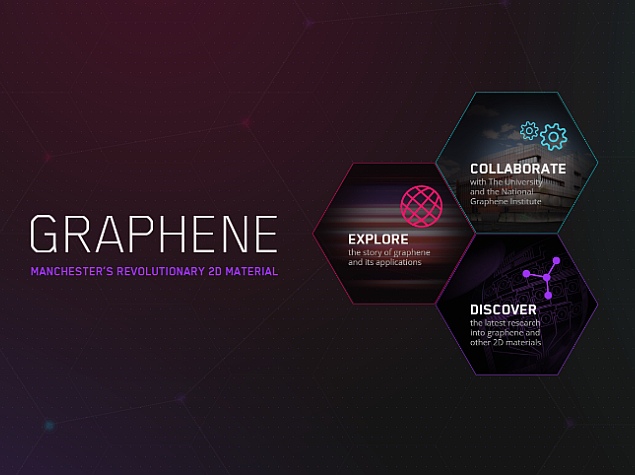- Home
- Science
- Science News
- Graphene a Promising Candidate in Fuel Cell Technology: Study
Graphene a Promising Candidate in Fuel Cell Technology: Study

Graphene, impermeable to gases and liquids, can easily allow protons to pass through it, suggesting it could be a promising candidate for use in hydrogen fuel cells, according to a new study published in the journal Nature.
Graphene, an atom-thin film of carbon atoms arranged in a honeycomb pattern, has a number of interesting properties that make it an attractive candidate for various technologies, Xinhua reported citing the study published Wednesday. It was previously assumed that unless graphene had defects, sheets would need to be perforated to allow transport through them.
The latest study was led by Andre Geim from Manchester University and Wu Hengan from the University of Science and Technology of China.
The team tested whether protons were also repelled by graphene, expecting they would be blocked. However, researchers found that protons passed through the ultra-thin crystals surprisingly easily, especially at elevated temperatures and if the films were covered with catalytic nano-particles such as platinum.
(Also See: Graphene Ferroelectric Tunnel Junction Boosts Digital Memory: Study)
The discovery makes graphene an attractive possibility for use as a proton-conducting membrane, which is at the heart of modern fuel cell technology.
Fuel cells use oxygen and hydrogen as a fuel and convert the input chemical energy directly into electricity. Without membranes that allow an exclusive flow of protons but prevent other species to pass through, this technology would not exist.
According to researchers, the discovery could "revolutionise" fuel cells and other hydrogen-based technologies in the future.
Catch the latest from the Consumer Electronics Show on Gadgets 360, at our CES 2026 hub.
Related Stories
- Samsung Galaxy Unpacked 2025
- ChatGPT
- Redmi Note 14 Pro+
- iPhone 16
- Apple Vision Pro
- Oneplus 12
- OnePlus Nord CE 3 Lite 5G
- iPhone 13
- Xiaomi 14 Pro
- Oppo Find N3
- Tecno Spark Go (2023)
- Realme V30
- Best Phones Under 25000
- Samsung Galaxy S24 Series
- Cryptocurrency
- iQoo 12
- Samsung Galaxy S24 Ultra
- Giottus
- Samsung Galaxy Z Flip 5
- Apple 'Scary Fast'
- Housefull 5
- GoPro Hero 12 Black Review
- Invincible Season 2
- JioGlass
- HD Ready TV
- Laptop Under 50000
- Smartwatch Under 10000
- Latest Mobile Phones
- Compare Phones
- OPPO Reno 15 Pro Max
- Honor Win RT
- Honor Win
- Xiaomi 17 Ultra Leica Edition
- Xiaomi 17 Ultra
- Huawei Nova 15
- Huawei Nova 15 Pro
- Huawei Nova 15 Ultra
- Asus ProArt P16
- MacBook Pro 14-inch (M5, 2025)
- OPPO Pad Air 5
- Huawei MatePad 11.5 (2026)
- Xiaomi Watch 5
- Huawei Watch 10th Anniversary Edition
- Acerpure Nitro Z Series 100-inch QLED TV
- Samsung 43 Inch LED Ultra HD (4K) Smart TV (UA43UE81AFULXL)
- Asus ROG Ally
- Nintendo Switch Lite
- Haier 1.6 Ton 5 Star Inverter Split AC (HSU19G-MZAID5BN-INV)
- Haier 1.6 Ton 5 Star Inverter Split AC (HSU19G-MZAIM5BN-INV)
















